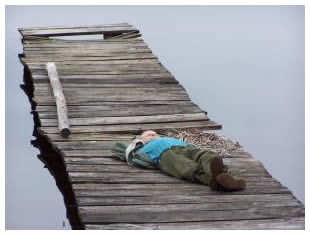 Following on from What is Autism? , we’ll now look at some of the many theories surrounding the development of autism, and try to make sense of the puzzling array of symptoms that characterize this disorder.
Following on from What is Autism? , we’ll now look at some of the many theories surrounding the development of autism, and try to make sense of the puzzling array of symptoms that characterize this disorder.
Chloe is three-years-old and typifies the behavior of an autistic child. Chloe could be said to live in her own world – an observation used for generations to describe the everyday habits of the autistic child. She spends much of the day picking at the carpet and examining it, then throwing it in the air and watching it fall. She will become fascinated with mundane objects, and focus on them exclusively for hours and will become extremely upset if her mother takes the object away. In fact, Chloe’s screams were so loud and so regular that on one occasion the neighbors believed that she was being abused and called the police.
Chloe seems uninterested in her mother’s love and does not interact in games with either adults or other children. She has, however, developed a special sign that her parents recognize when Chloe wants something, or is in pain. So far, it is the best means of communication between parent and child. Chloe hasn’t spoken yet, nor does she make attempts to dress herself. She rarely makes eye contact with others, even with her mother with whom she spends most of her days. Instead, she may sit for long periods of time gazing at an overhead light, or the acacia branch which taps on her bedroom window on windy days. Chloe’s pediatrician has diagnosed autistic disorder and has explained to her family that both they and she will need extensive ongoing support.
Autism is described as a pervasive developmental disorder which means that the child with autism will experience significant problems throughout the course of the lives. Three principal characteristics typify autism: impairment in social interactions, impairment in communication, and restricted behavior, interests, and activities.
Historically, autism was attributed to failed poor parenting skills, with a cold, perfectionistic, and aloof style of parenting believed to be the cause of the autistic behavior. This explanation was devastating to the parents of an autistic child, who were already struggling with the difficulties that their child’s behavior presented. Fortunately, this theory has long since been discarded. Difficulties in communication and socializing now appear to be principally biological in origin. It is now clear that genetics plays a large role in the development of autism. Families with one child with autism have an almost 5% risk of having another child with the disorder. This may not sound significant but the incident rate of autism in live births is around 0.0005%. There appears to be no one gene responsible for the disorder—to date as many as 10 genes have been implicated.
The high rate of mental retardation associated with autism has also lead to the conclusion that the disorder is associated with some form of organic brain damage. Apart from lowered IQ, autistic children may also display clumsiness or abnormal posture and walking style, also suggesting that autism has a neurobiological origin. With the development of MRI technology, it is now possible to observe differences between an autistic brain and a non-autistic brain, the most obvious marker being a reduction in the size of the cerebellum in some subjects, a structure at the back of the brain responsible for muscle coordination and motor response.
There remains much research to be carried out on this disorder which will in turn lead to more efficient ways of care, management, and perhaps even prevention.

